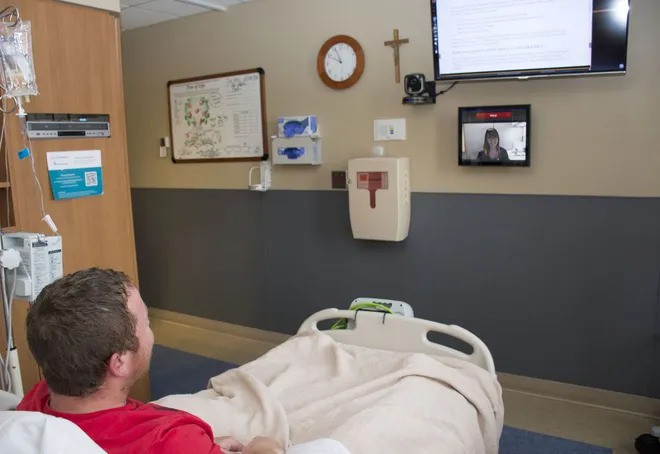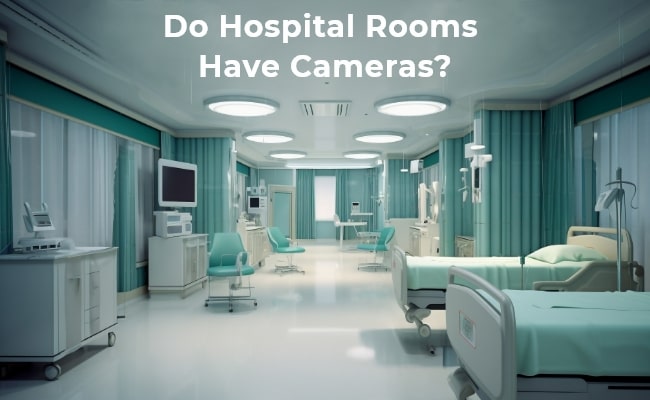Hospital rooms may have cameras for safety, but they must follow privacy laws like HIPAA and are usually placed in high-risk areas with strict rules.
Hospitals are places where people go to heal and get care, but they are also places where safety and security are very important. One question that often comes up is whether hospital rooms have cameras. Let’s explore this topic to understand why cameras might be used in hospitals, what rules they must follow, and how they impact patient care and privacy.
Yes, some hospitals do have cameras in certain rooms, but not all rooms have them. The decision to install cameras depends on the hospital’s policies, the type of room, and specific needs. Cameras are more common in areas where patients need constant supervision, such as intensive care units (ICUs), or in rooms where there might be safety concerns. However, in most general patient rooms, cameras are less common due to privacy concerns.

Hospitals might use cameras in patient rooms for several reasons, such as:
- Patient Safety: Cameras can help staff keep an eye on patients who might be at risk of falling, having seizures, or experiencing other medical issues. For example, a camera can alert nurses if a patient is trying to get out of bed unsupervised, which could lead to a fall.
- Preventing Theft and Unauthorized Access: Cameras can help prevent the theft of personal items and medical equipment. They can also help control who enters and exits certain areas to protect both patients and hospital staff.
- Protecting Staff and Patients: Cameras can document incidents like accidents or conflicts, which can be useful for investigations or legal purposes. They can also help ensure that staff follow safety protocols and provide quality care.
HIPAA, or the Health Insurance Portability and Accountability Act, is a law that protects patient privacy and keeps medical information confidential. The use of cameras in hospitals must comply with HIPAA. Hospitals must make sure that any camera footage does not capture protected health information (PHI) or, if it does, that it is only accessible to authorized staff. For example, cameras might be positioned in a way that avoids recording private medical conversations or details about a patient’s condition.
Hospital room cameras come in different shapes and sizes, but they are generally designed to be small and discreet. They are often mounted on the ceiling or in corners to cover the entire room. Some cameras are dome-shaped or look like small boxes, while others are designed to blend in with the room to avoid making patients feel uncomfortable. In some cases, cameras might be hidden to avoid causing stress or anxiety for patients.
Yes, Emergency Room (ER) rooms often have cameras. ERs are busy areas with a lot of activity, and cameras help monitor the flow of patients, ensure staff safety, and provide real-time information for emergency response teams. However, cameras in ERs are usually placed in ways that do not capture sensitive information or compromise patient privacy. They are mainly focused on monitoring public areas, not individual patient care.
Most hospital cameras do not record audio because of privacy laws. Recording audio could capture private conversations between patients and their doctors or family members, which would violate privacy regulations like HIPAA. If a hospital does have cameras that record sound, they must inform everyone clearly with signs or other notifications, and the use of such cameras would be very limited.
Also read: Xsx Logitech Camera Mic not Working – Ultimate Fix!
Access to hospital camera recordings is restricted to specific staff members, like security personnel, hospital administrators, or legal teams. Only people with a valid reason, such as investigating an incident or ensuring safety, can view these recordings. Hospitals have strict rules and procedures to make sure that only authorized individuals can access or review the footage.
Apart from HIPAA, there are other laws that hospitals must follow regarding video surveillance:
- State Privacy Laws: Each state has its own laws about privacy and surveillance. Some states have stricter rules than others on where and how cameras can be used in hospitals.
- Federal Privacy Regulations: Other federal laws, like the Americans with Disabilities Act (ADA) and the Civil Rights Act, also play a role. These laws make sure that video surveillance does not unfairly target or discriminate against certain groups of people.
- Joint Commission Standards: The Joint Commission, an organization that accredits healthcare facilities, sets standards for patient care and safety. These standards can include guidelines on where and how hospitals should use surveillance cameras.
Beyond using surveillance cameras, there are many ways hospitals can support and protect patients. This includes using less intrusive technology to monitor patients, improving communication between staff and patients, and making sure privacy concerns are addressed.
For example, hospitals can use wearable devices that monitor vital signs without video surveillance. Educating patients about their rights and the reasons for any security measures can also help reduce anxiety and build trust.

Hospitals place cameras in areas where they will be most effective for safety and security. Common places include:
- Entrances and Exits: To monitor who comes in and goes out of the hospital.
- Hallways and Corridors: To keep track of movement and prevent unauthorized access to certain areas.
- Nurses’ Stations: To monitor high-traffic areas and ensure quick responses to emergencies.
- Medication and Storage Rooms: To prevent theft and ensure that only authorized personnel handle medications and supplies.
- ICU and High-Risk Patient Rooms: To provide close monitoring of patients who need constant observation.
Security cameras in hospitals offer many benefits, including:
- Improved Patient Safety: Cameras help monitor patients at risk and can alert staff to emergencies or urgent situations.
- Enhanced Security: Cameras deter theft, vandalism, and unauthorized access, making the hospital safer for everyone.
- Staff Protection: Cameras can help prevent and investigate incidents involving staff, such as assaults or conflicts, improving overall safety in the workplace.
- Better Incident Documentation: Footage from cameras can provide valuable evidence for investigations, legal matters, or quality control.
- Operational Efficiency: Cameras help hospitals monitor patient flow, manage resources effectively, and identify areas where improvements are needed.
Yes, some hospitals have cameras in patient rooms, but it depends on hospital policies, room type, and specific needs.
Cameras in hospital rooms are used for patient safety, preventing theft, protecting staff, and monitoring high-risk situations.
No, if used properly, hospital cameras do not violate HIPAA as long as they do not capture protected health information (PHI) or are accessible only to authorized personnel.
Most hospital cameras do not record audio due to privacy concerns, and if they do, clear notification must be given.
Only authorized personnel, such as security staff or administrators, can access camera recordings for safety, legal, or operational reasons.
Cameras in hospital rooms serve important functions, such as enhancing patient safety, monitoring high-risk areas, preventing theft, and ensuring the well-being of both patients and staff. These surveillance tools help healthcare providers quickly respond to emergencies, reduce the risk of accidents, and maintain a secure environment. However, while the use of cameras offers numerous benefits, it also raises valid concerns about privacy and confidentiality.
